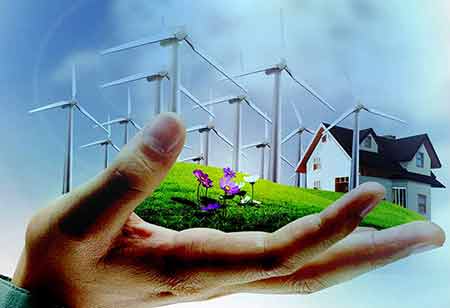Thank you for Subscribing to Energy Business Review Weekly Brief
Pros & Cons Of Energy Performance Contracting
The EPC vendor, an ESCO or Energy Services Company, will install the necessary equipment to enhance energy efficiency at no charge to the client.

By
Energy Business Review | Wednesday, January 26, 2022
Stay ahead of the industry with exclusive feature stories on the top companies, expert insights and the latest news delivered straight to your inbox. Subscribe today.
Energy Performance Contracting (EPC) is a kind of ‘creative financing’ to fund energy efficiency improvements for organizations.
FREMONT, CA: The EPC vendor, an ESCO or Energy Services Company, will install the necessary equipment to enhance energy efficiency at no charge to the client. In return, the EPC vendor will take a considerable proportion of the savings made.
Benefits of energy performance contracting.
Energy Performance Contracting can benefit organizations that find it difficult to raise funds for capital projects or have little experience managing such projects.
Disadvantages of energy performance contracting.
The main drawback is that the ESCO will take as far as 80% of the energy cost savings for the first seven years, leaving you with just 20% of the savings. After seven years, you will have 100% of the savings, but the equipment installed by the vendor may require replacing or refurbishing before too long.
What are the steps concerned in an EPC?
The steps are like this (these may vary slightly between ESCOs)
• ESCO confirms that the client is serious and not talking to other ESCOs. Why – the steps in agreeing to a contract are expensive.
• Undertaken walk-through audit to inform ESCO that the project is viable
• A contract is drawn up and provisionally agreed upon.
• Engage in an Investment Grade Audit (IGA). These audits will expense between €/£20,000 to €/£50,000. If the client decides not to continue, they may be requested to pay the cost of the IGA.
• ESCO installs new or upgrades existing equipment, and the energy savings start.
• The savings are divided as agreed in the EPC.
An alternative to Energy Performance Contracting
We believe EPC is only a suitable option for large organizations with an imposed policy to reduce energy consumption, where energy cost savings are a secondary consideration and capital spending is difficult.
Where organizations are interested in reducing their energy consumption and making financial savings, better value can be obtained by working with Environmental Efficiency on an Energy Reduction Programme (ERP). We have found that at least 20% of cost savings can be made through no-cost and low-cost actions.
Additional savings of between 20% and 30% can be found with capital projects. For capital projects, significant financial help is available from state organizations and Obligated Parties. Thus an ERP will enable clients to keep a much greater proportion of the energy savings, but with much lower capital costs than conventionally expected; for this service, Environmental Efficiency will charge a fee for the audit plus a management fee equivalent to 20% of the savings for five years.






